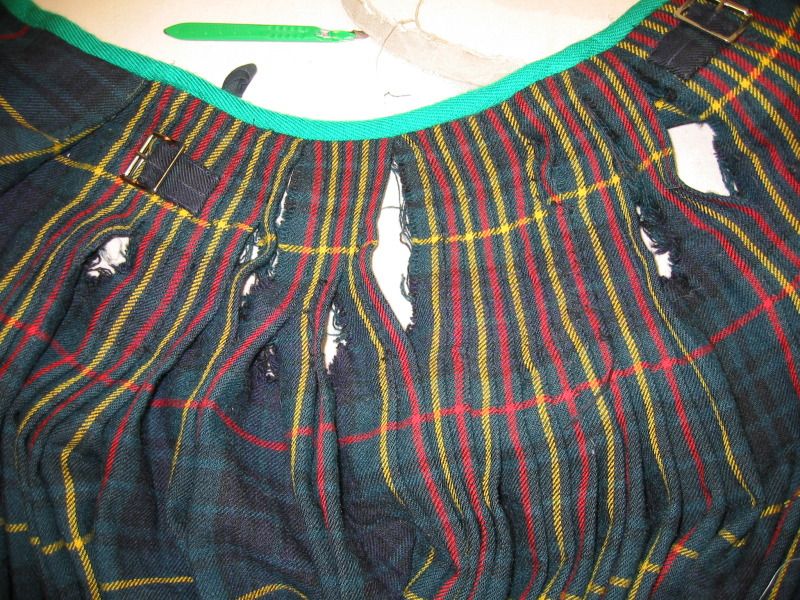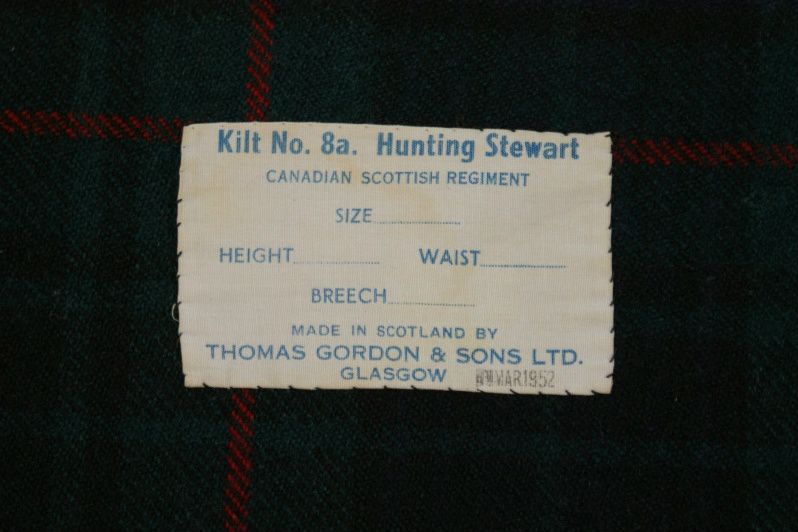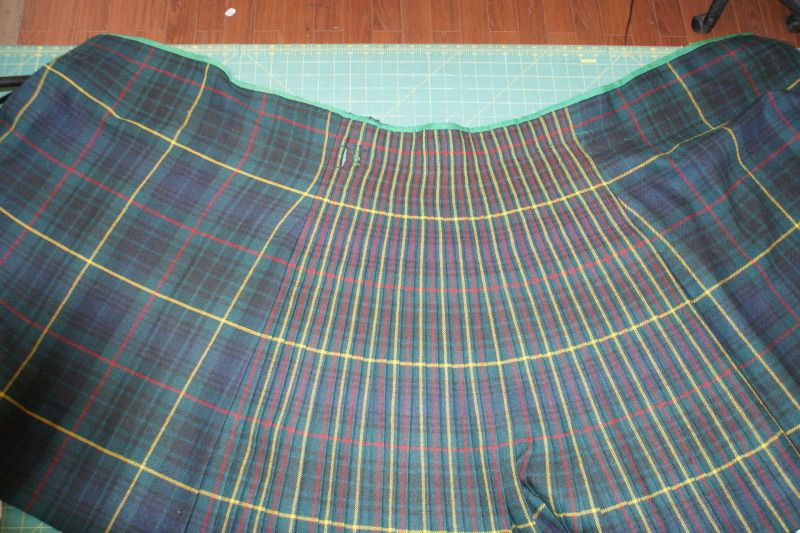Many of you remember when I did a long pictorial which is part of this thread (click here), where one of our members asked if a kilt should change size as it is worn. In that thread I tested the kilt and then rebuilt it for him to include the stabilizer and interfacings which were missing.
And some of you may remember that I am now the Regimental Kiltmaker to the Canadian Scottish Regiment.
We have been getting kilts here at the shop for repair. Some are old and some pretty recent. All of these kilts have suffered far more abuse than what a kilt would normally go through. They are worn in rain, mud, on parade and in the field. They are issued to new troops with very little knowledge of how to care for a kilt and because they are issued the troops have little concern in taking care of them.
Here is just one of the kilts that has come in. Many of the Regimental kilts look like this when I get them.
This kilt was made by a reputable traditional kiltmaker here in BC and is only about 12 years old.
Today I began the repairs to a kilt that at first glance I thought was new and would need new straps and buckles and a new waistband. Can you imagine my surprise when I found this label inside.
Note the date stamped in the lower right corner. That's right, March 1952. That makes this kilt 60 years old.
Here is what a 60 year old kilt looks like.
A pretty dramatic contrast to the kilt in the first photo.
I thought some of you would enjoy seeing what it takes in the way of construction to allow a kilt to survive 60 years of total abuse.


















Bookmarks